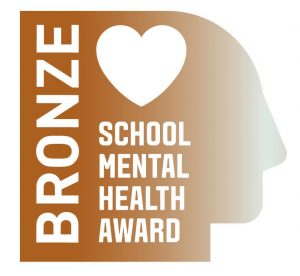| ST. ANSELM’S COLLEGE CURRICULUM VISION FOR DESIGN TECHNOLOGY |
| VISION – A highly ambitious curriculum in Design Technology is one which prepares them for the world they live in. DT gives young people the skills and abilities to engage positively with the designed and made world. They learn how products and systems are designed and manufactured, how to be innovative and to make creative use of a variety of resources including traditional and digital technologies, to improve the world around them. DT is a subject that has the power to transform; we aim to instruct students about designing solutions that improve people’s lives. Solutions which mean people can make better decisions, to work more effectively or comfortably, to fully understand the impact of products and product design on the world and its resources. A curriculum that demonstrates that the skills fostered by Design and Technology are valuable preparation for careers in many other fields. Students should grow in confidence through creative experiences in dedicated teaching environments, using tools and manufacturing equipment and benefit from specialist teaching. |
| INTENT – summary of the thinking behind your curriculum design and its sequencing DT teaches young people to ‘think with their hands.’ The ability to use tools and materials to solve problems is vital. At the centre of the subject is creativity, imagination, problem solving and human expression. DT is a subject which draws, develops, and implements a range of different disciplines including Mathematics, Science, Engineering, Computing, Geography, Business Studies, and Art. The subject embeds high quality literacy skills through analysis and evaluation techniques. As students’ progress to GCSE the subject allows for deeper study of the world they live in, potential career opportunities and with the skills developed at KS3 the confidence to task risks, become resourceful, innovative, enterprising, and capable citizens. This subject encourages students to design and make products that solve real and relevant problems, within a variety of contexts, while considering their own and other’s needs, wants and values. |
| IMPLEMENTATION – summary of the pedagogy to be used to effectively deliver the curriculum Through our subject we look to actively develop skills, such as teamwork, project and time management which are consistently sought and valued by employers. We value and celebrate the acquisition of practical skills. Students will develop an appreciation of the varying properties and aesthetic qualities of materials. A range of visual, auditory, and kinaesthetic resources are used throughout lessons creating an environment of confidence where students feel they can experiment, make mistakes, and tackle their own design problems. Through important levels of expertise in health and safety students can feel confident to use a range of tools, equipment, and machinery to develop their knowledge and understanding. Regular use of teacher led demonstration of processes and applications both practically and through the safe supervision of student activities. Working in a practical space together, sharing tools and equipment means that students need to be considerate and aware of health and safety implementations. DT creates a realistic sense of teamwork allowing students to create together, help each other and take inspiration from each other. The use of computer programmes and applications are also a key focus to be utilised by children in their design of their products. In lessons and in homework activities, students will be taught to understand technology, people, and the environment: in today’s world there is an ever-increasing focus on the use of resources and the impact on the environment, resulting in a greater awareness of sustainable design. We aim to instruct students about the social, economic, and moral issues associated with producing products across the world. Learning progresses from making items for themselves onto making items for others and then specific clients and groups in society. To master these skills and knowledge through a perseverance. To foster intellectual inquisitiveness about how and why things work the way they do. To understand the history of design and technology developments, to appreciate and respect the past, immerse themselves in the present and design for the future. In addressing the above, we aim to create an environment in which students can take creative risks, in which they can develop original and imaginative ideas. We empower students to clearly communicate their ideas to others, to knowledgably select the best materials for realising their designs and to complete the design cycle by evaluating and improving their products. All the skills and knowledge learned equips students not merely for public exams but for their life beyond St Anselm’s College. |
| IMPACT – the long-lasting impact your curriculum will have on our students We will evaluate the impact of the curriculum through qualitative and quantitative measures such as: Attainment and Achievement outcomes. The final measurable outcomes achieved by the students that we teach will be a clear indication of the quality of our Design and Technology curriculum. This can also be used as a measure of the standard of teaching and learning within the subject. Assessments. Assessment of children’s learning in Design Technology is an ongoing monitoring of children’s understanding, knowledge, and skills by the class teacher, throughout lessons. This assessment is then used to inform differentiation, support and challenge required by the children. Summative assessment is conducted termly to inform the teacher of progress or skills and knowledge still to be embedded. DT take up, progression and engagement beyond KS3 is vital and is a good indicator of positive impact. Provision of skillsets within the future workplace is becoming increasingly valued and DT is central to the provision of apprentices and undergraduates required in specific fields of design, engineering, and manufacture to name a few areas of employment shortages. |









